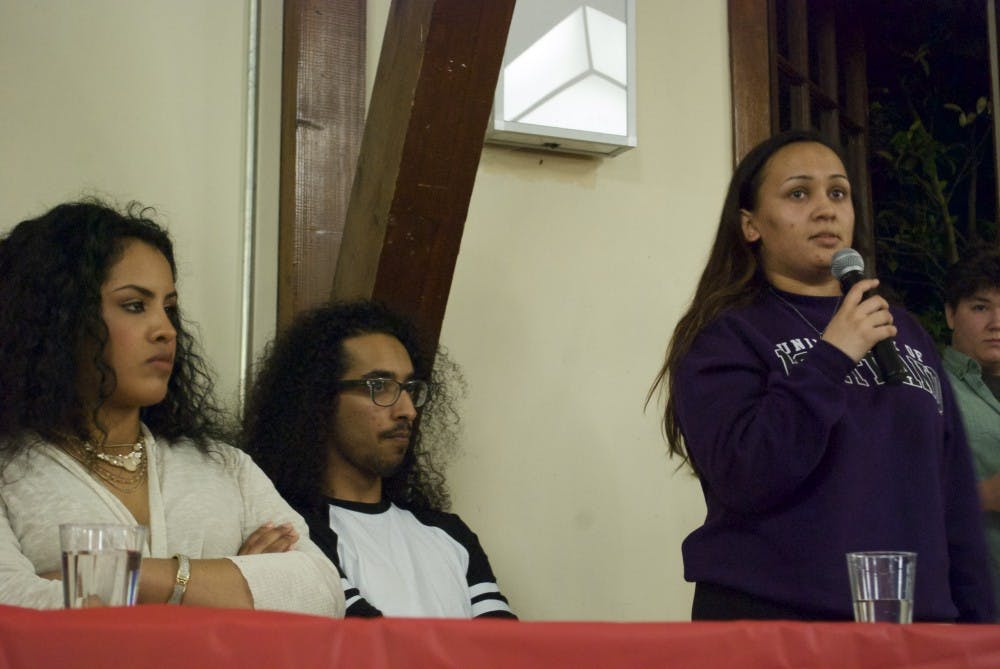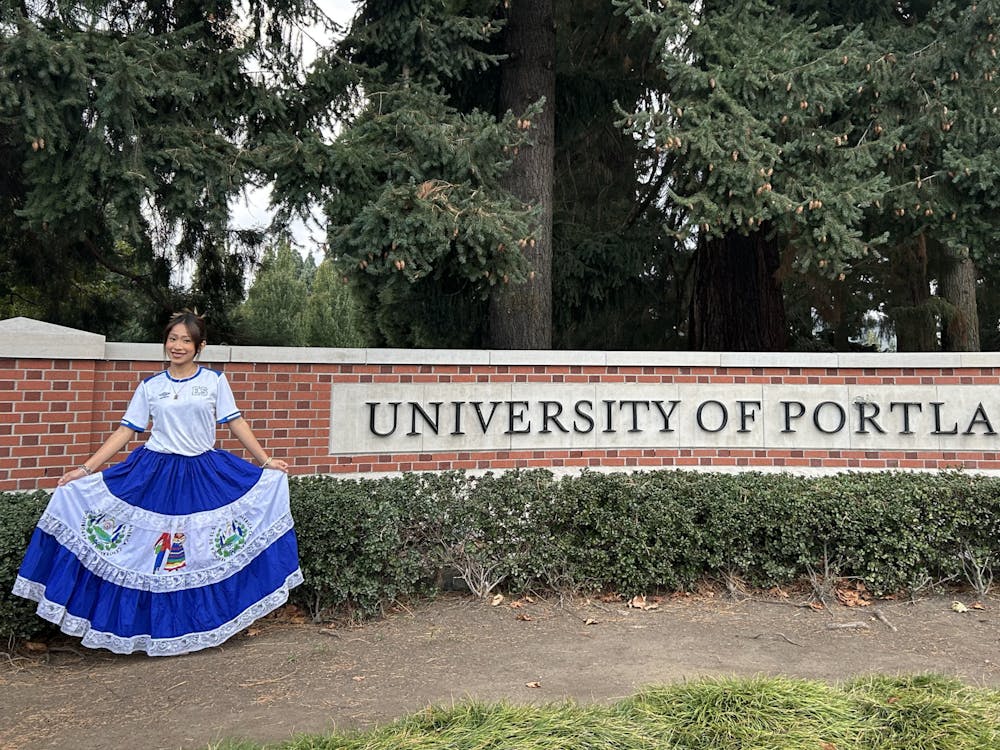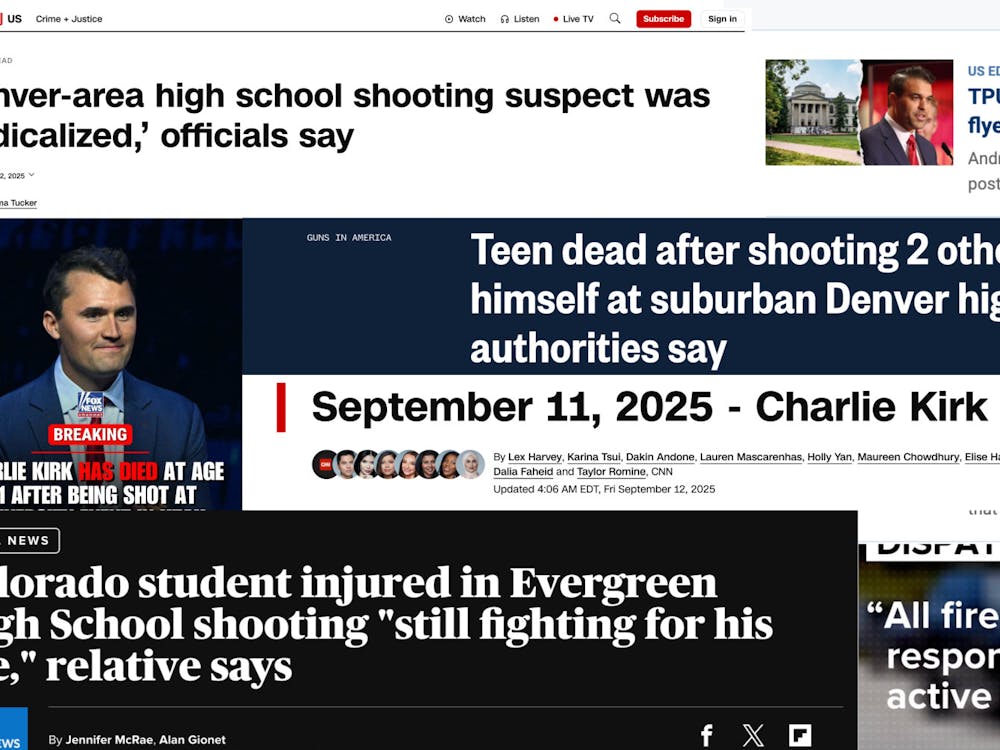By The Beacon Editorial Board
This university — students especially — is mobilizing around issues of race.
The Beacon has written many stories about the racial and cultural tensions on our campus: from being black at UP to microaggressions to cultural appropriation. Last year, students joined the Black Lives Matter movement at UP. This year, the Presidential Advisory Committee on Inclusion (PACOI) focused on addressing racial inclusion on campus. In the last few weeks, students and the administration organized two racial inclusion discussions on campus. And next week, Diversity Programs in the Office of Student Activities, the School of Nursing, the Office of University Relations and the Moreau Center are bringing scholar and anti-racism activist Tim Wise to campus.
But there’s still a disconnect between students and the administration.
Despite the administration’s best intentions, the outcomes of many of their discussions, meetings and planning have been counterproductive to improving racial inclusion on campus.
On March 22, PACOI hosted a Community Engagement on Racial Inclusion event. While the event was planned with good intentions, it resulted in students of color feeling silenced.
Freshman Carolina Sanchez was shocked by the event organizers’ decision to not let students of color speak.
“In that moment, I felt really … disrespected,” Sanchez said. “I felt not included. I felt … minimized and marginalized once again.”
Senior Khalid Osman helped plan the event, but said he never meant to make anyone feel uncomfortable.
“I don’t want anyone to feel like they were disrespected,” Osman said. “There was no intention to harm anyone at the event … We did want to honor every student’s story.”
Sophomore Emma Martinez is the only official student representative on PACOI. She was also on the planning committee for the event, but she hardly felt incorporated in the planning — or in the committee as a whole.
“I never felt part of the group,” Martinez said. “I think that UP is just trying to prove to its students that there is a strong connection and relationship between students and administration on issues that are important to us, but there’s not.”
Recently, the administration hired a white man for the vacant VP position, Associate Vice President for Student Development, that was created when Laurie Kelley, the first and only female VP in the administration, left UP. The Beacon wrote an editorial months ago strongly encouraging the University to fill that position with someone who could bring diversity to UP administration. While perhaps the administration approached this open position with the intention of finding diverse candidates, the outcome was not that. The outcome was another white male in a position of power, which reduced the gender diversity in the upper administration and left some students of color feeling marginalized again.
Senior Alexa Bryant-Capellas, co-president of the Black Student Union, said she believes administrators are afraid of acknowledging their blind spots and sitting with their own discomfort.
“People were expecting more,” Bryant-Capellas said. “People were expecting (administration) to (take) this perfect opportunity to introduce somebody into the power circle of the administration that represents a population that, not only says they’re underrepresented, but is clearly, statistically, undeniably underrepresented.”
It’s these short-sighted administrative decisions that, according to Bryant-Capellas, cause more harm to the UP community.
On top of that, last month The Beacon was told by professors that Black Lives Matter posters were being taken off professors’ office doors and thrown in the trash — an incident of vandalism with concerning racial implications. Yet the administration and Public Safety never alerted students directly about the racialized element of the vandalism they listed on their crime log — which was vague and confusing. And while their intention might have been to investigate the situation before concerning the community, the outcome was some community members of color feeling disconnected, uninformed and marginalized again.
“You tell us when a priest on our campus gets reassigned, and you’re not going to tell us when someone … attacks a racial, ethnic, cultural group on campus,” Bryant-Capellas said. “That’s BS to me. It just shows that they don’t think that much of us, that they’re not willing to be transparent.”
These three instances are only singular examples of how good intentions can result in bad outcomes — and that’s mostly how modern day, structural and institutional racism works. Rarely do our decisions begin with racist intentions, but sometimes the outcomes are racist.
Sociology professor Ashley Mikulyuk spoke at the second event on racial inclusion last Tuesday expressing this exact sentiment.
“Institutional policies and practices can injure people of color, and when it does, it is racist in outcome, if not in intent,” Mikulyuk said.
So while we appreciate the administration’s good intentions — that’s not enough.
Good intentions are not enough.
We need good, diverse, inclusionary, tangible outcomes.
We don’t need more statements of inclusion. We need students and staff to feel included.
We don’t need to improve the “perception” of diversity on campus. We need to improve the reality of diversity on our campus.
We don’t need you to bring speakers to campus or hold a one-time event to address our concerns. We need a change that influences the everyday operations of our administration, that impacts the daily experiences of students of color at UP.
We need the administration to DO something.
At last Tuesday’s event, several students spoke explicitly about ways administration could make changes to incorporate diversity into our institution.
Senior Julie Pham identified the core curriculum as an area where diversity could be infused into the structure of our community.
“One of the requirements at UP is to take philosophy and ethics classes, and in most of the classes we see from the white male perspective,” Pham said. “Why is that dangerous? It’s biased and short-sighted. Bring in more minority perspectives, people from a different racial or cultural perspective or more women … I believe when we have more diverse perspectives in the classroom, it will enhance our education.”
https://youtu.be/h3crnLbQV-k
Freshman Ezedin Jabr also spoke at the event and identified hiring practices as a way the administration should be including diversity.
“Students need to be equally represented in staff, administration and faculty … in order to feel a sense of belonging,” Jabr said.
Changes in hiring practices could include changing how and where open positions are advertised, or it could include establishing an opportunity hire program, which already exist at countless colleges across the United States. Opportunity hire programs set aside funds specifically for employing and retaining individuals who are qualified and who bring a unique perspective to the institution. This kind of program could be used to intentionally diversify our faculty and the administration when exceptional candidates present themselves.
While the administration recently hired Terry Porter to coach our men’s basketball team, that doesn’t discount the structural and institutional barriers that prevent more diverse candidates from getting jobs at UP. It’s great that students will have a strong, black male role model in a position of power on campus, but a singular hire doesn’t address the larger, structural problem.
And in order to create larger, structural change, the administration needs to act. Students can only say and do so much.
Students are organizing and communicating. Students are trying to open dialogues and doorways. Students are trying to create positive, structural change on our campus. But we need cooperation.
We all have a part to play in this discussion — but we all need to participate in order to have a meaningful conversation. Sometimes that means stepping up to the microphone and sometimes that means passing it. And sometimes that means putting the microphone down so that you can go and effect change.
Despite students’ large investment in this institution, the power still lies in the hands of the elite administrators.
Freshman Lydia Heye, who spoke on the panel on Tuesday, expressed her respect for students’ action and disappointment with the administration.
“It’s empowering to see how students can step up,” Heye said. “But it’s discouraging because the students are tasked with doing something the administration should already be doing from the top down.”
ASUP’s newly elected president, Brandon Rivera, and vice president, Tsikata Apenyo, understand this issue and plan to set a good example in the following year.
“I think, when administration looks at ASUP, the last three general elections have led to an African-American president or vice president,” Apenyo said. “So why isn’t administration making steps toward that? Obviously the student body is cognizant of the problem and they’re willing to address it...”
Rivera said he and Apenyo are not afraid to fight for the students’ concerns.
“We want the student body to know we’re not afraid of criticism or anything like that,” Rivera said. “We’re willing to stand up for them, for what they… want to see changed on campus. We’re willing to put ourselves out there and say, ‘Hey, this is what the students want. What are you doing about it?’”
UP administration could learn a thing or two from Rivera and Apenyo’s commitment to student voices and concerns.
But frankly, we’re getting really tired of having to repeat ourselves: It’s time for change.
Administration, you need to start dealing with race — actively and proactively, constantly and consistently. There should never be a time when administrators aren’t addressing race in some way — because that’s a privilege UP’s students of color are never afforded.
Administration, you need to stop waiting for something big to happen. That’s not how racism works. Modern structural and institutional racism is thousands of small, everyday events and interactions that lead people of color to feel excluded, isolated and disregarded. You don’t need a big event to signal a time for change because we’re telling you right now: It’s time for change.
We’re getting really tired of having to repeat ourselves … But don’t think that we’re going to stop. We’re not stopping. We’re not going to let white privilege silence the voices of students, faculty and staff. We’re proud to serve as the voice of students at the University of Portland. The Beacon print issues may end after today, but our commitment to giving marginalized voices a powerful platform for expression won’t ever go away.
We’re fed UP, but we’re not going to give UP. This is too important. Students are too important. People are too important. UP is too important.
Enough is enough.
Editor’s note:
To our knowledge, The Beacon has never put an editorial on the front page in its 81-year history. We’re doing this because we support the recent outcry from students of color.








